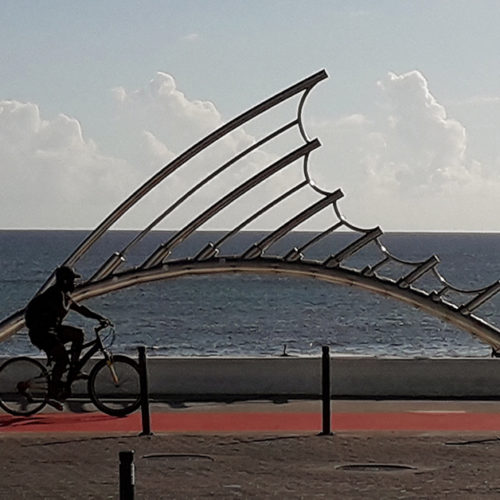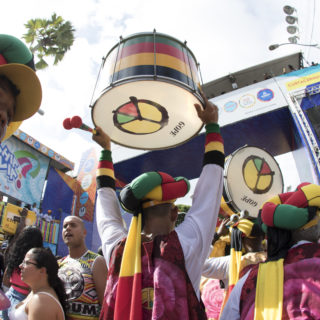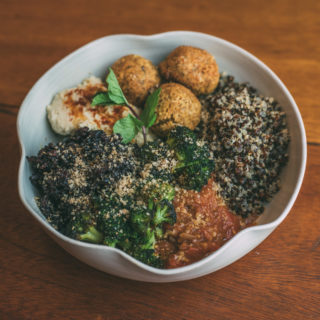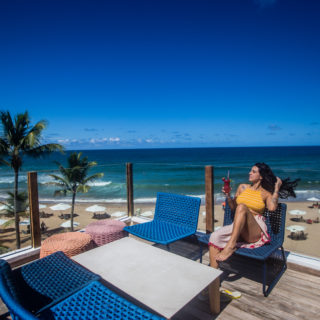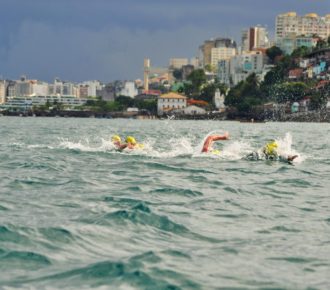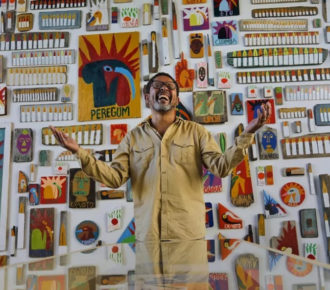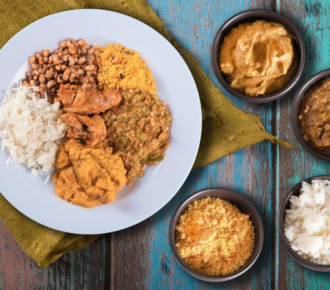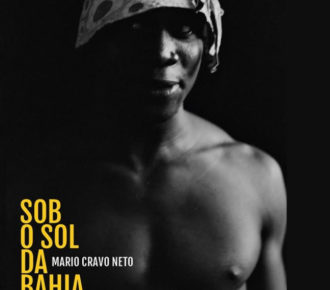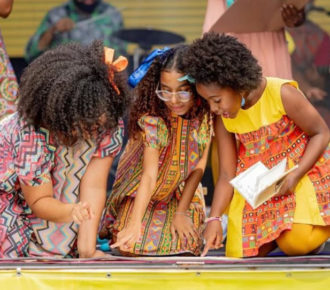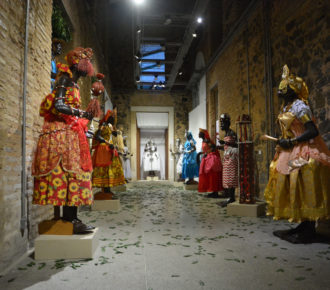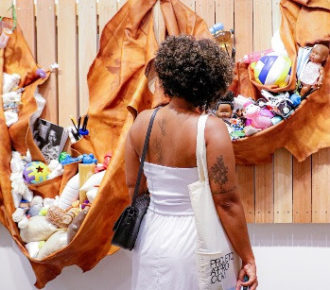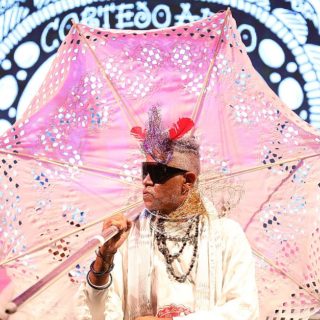
Discover Salvador’s monuments that tell the story of the resistance of the black people
Visit Salvador da Bahia made a list of monuments, statues, herms and heritage goods that will make you better understand your own history

Those who walk the streets of Salvador have many reasons to be enchanted. Be it for the people’s behavior, for the privileged sunset, for the smell of acarajé in several corners or for the syncretic-religious itinerary. But have you ever stopped to notice the statues and monuments that make up the scene in different neighborhoods in the city? Have you ever wondered what they mean? Yeah. Many help to eternalize the history and struggles of the black population of Bahia, since, after centuries of colonization and slavery, these monuments help to preserve and enhance our culture, as well as to rescue the history of struggle and resistance of the African and Afro-Brazilian peoples, who promoted diverse social transformations.
Visiting Salvador and finding these landmarks make us connect with memory, value voices of a universal struggle for affirmation, and is an inspiration for our reexistence. Thinking about it, Visit Salvador da Bahia decided to give you a helping hand to enrich your tour with knowledge and surprising stories.
“The historical record in the form of monuments accounts for some forms of exercising the memory of a people, a culture, a civilization. Memorialism is a practice of several societies throughout history. In the case of monuments that evoke black ancestry in Salvador, it is important to see that they are public inscriptions that refer to facts in which black people were present in leading roles ”, summarizes Carlos Barros, historian, social scientist and popular music singer.
Conjuração Baiana de 1798 (Bahian Conjuration of 1798)
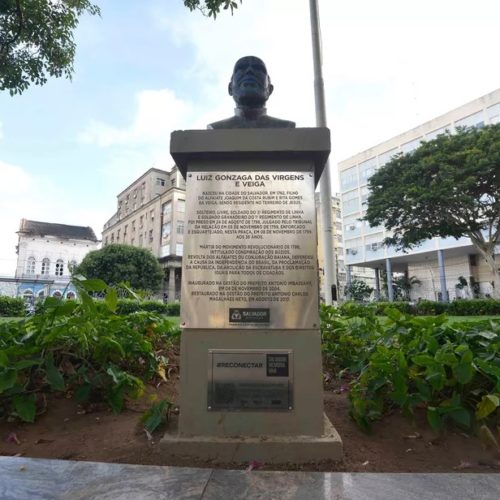
If you go to the city center, you will come across four busts of historical personalities, located in the heart of Praça da Piedade: tailors João de Deus Nascimento and Manuel Faustino dos Santos Lira; and soldiers Luiz Gonzaga das Virgens e Veiga and Lucas Dantas de Amorim Torres.
Carved in bronze, the busts pay homage to the four men who were hanged and butchered in a public square on November 8, 1799. Convicted of conspiracy against the Crown of Portugal, they were considered by the Judges of Bahia’s Court of Appeal as protagonists of a movement known as “Conjuração Baiana de 1798”, also called “Revolta dos Alfaiates” or “Revolta dos Búzios”.
The movement, of an emancipationist character, took place at the end of the 18th century (1798-1799), in the then Captaincy of Bahia. It was widespread as a popular movement in which they defended independence and more racial equality, in addition to a republican, democratic government, with full freedoms, free trade and opening of ports as main points. They also advocated a higher salary for soldiers. The sentence for all was the hanging followed by the butchering at Praça da Piedade.
Castro Alves Square
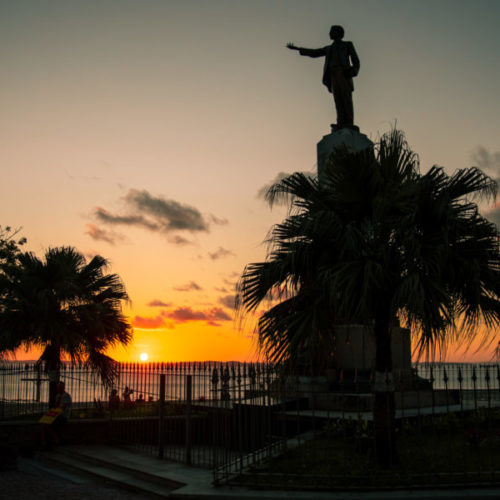
After this visit, it is worth going down Avenida Sete de Setembro towards the Historic Center. Right after the Sulacap building, you continue straight until you come across the statue of the poet Castro Alves, in front of the Espaço de Cinema Glauber Rocha. Also sculpted in bronze, the statue has at its base, under a granite top, the remains of the poet who became known as “The Poet of the Slaves”.
Antônio Frederico de Castro Alves was born on the Cabaceiras farm in Recôncavo da Bahia and, around 1853, came with his family to Salvador. He studied at Colégio de Abílio César Borges, where he was a colleague of Rui Barbosa and, during that period, he already showed great vocation for poetry. His literary production was guided by the social and moral causes, and also the abolition of slavery and the republic causes – political aspiration of the most exalted liberals of the time. In 1868, he moved to the São Paulo Law School, the same as that of his friend Rui Barbosa. A victim of tuberculosis, he returned to Bahia seeking health recovery. That same year, he published his first book, “Espumas Flutuantes”, gaining recognition while still alive and maintaining the struggle for abolitionist ideals until his death in 1871.
Bust of Mãe Runhó
Continuing the route to learn more about the history of the black people of this city, go to the neighborhood of Engenho Velho da Federação, where the bust of Mãe Runhó is located, in the square that bears the same name, next to Terreiro do Bogum. Made of fiber and concrete, the sculpture represents a tribute to the memory of Iyalorixá Maria Valentina dos Anjos Costa, Doné Runhó, from Terreiro de Bogum.
She became Iyalorixá at the age of 21, taking over the terreiro’s direction after the death of Doné Romana de Possú, in 1925, and remained in office for 50 years. She was succeeded by Mãe Gamo, Evangelista dos Anjos Costa, 64, who was the “mãe-pequena” of the house. The funeral of Mãe Runhó took place at the Quintas dos Lázaros cemetery, with the coffin being carried on the shoulders of the “filhos de santos”, who sang songs throughout the journey, following the tradition of candomblé.
Mãe Gilda de Ogum, symbol of resistance
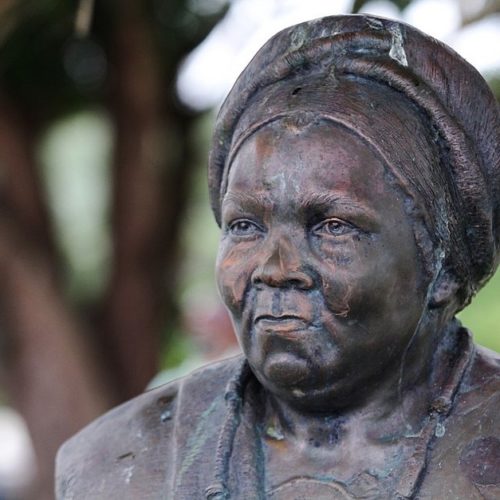
Another Iyalorixá honored in our city is Mãe Gilda de Ogum, a symbol of resistance for the affirmation of religions of African origin, after the terreiro Ilê Axé Abassá de Ogum was invaded and depredated by representatives of another religion. The bust, made of bronze, is in the Metropolitan Park of Abaeté, near Lagoa do Abaeté, in Itapuã.
Gildásia dos Santos e Santos was an activist in the project to combat religious intolerance and became a reference for the terreiros in Itapuã and throughout Bahia. In October 1999, Folha Universal published an article entitled: “Macumbeiros charlatões lesam o bolso e a vida dos clientes” (Charlatan sorcerers damage the customers’ pockets and lives). The article in the national periodical brought an unauthorized photo of Mãe Gilda with her religious robes in the yard.
After the publication, she suffered from accusations and slander arising from the story. Her house was invaded by religious fundamentalists, she was cursed, her husband was attacked and sacred objects were broken. Mãe Gilda fell ill and three months after the publication, the 65-year-old Iyalorixá suffered a fulminant heart attack that resulted in her death on January 21, 2000. In her honor, in 2007, Law 11,365, which enshrines the 21st January as the National Day to Combat Religious Intolerance was approved. Today, Ilê Axé Abassá de Ogum is conducted by Iyalorixá Jacira Ribeiro dos Santos, Mãe Jacira de Oxum, filha de santo and consanguineous daughter of Mãe Gilda.
According to historian Carlos Barros, the statues of Mãe Runhó and Mãe Gilda are marks of the female presence in Bahian social struggles: “Based on the ancestral and existential aspect of faith, the images of these women remind us that fighting is a constant act and how much Afro-Brazilian theogony is a foundation for our life in Bahia ”.
Luiz Gama: one of the greatest abolitionist leaders in Brazil
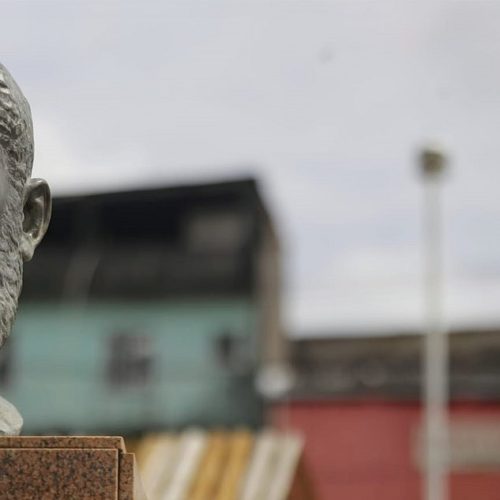
In other parts of the city, there are also monuments that help to eternalize the history and struggles of the black population of Bahia. In Largo do Tanque, for example, there is a herm* in honor of Luiz Gama, made of bronze and granite, in the center of the square. Luiz Gonzaga Pinto da Gama was born here in Salvador on June 21, 1830. He was the son of a Portuguese nobleman and Luíza Mahin, a free black woman who participated in several insurgencies of enslaved black people, including the “Revolta dos Malês” (Malês Uprising), in 1835. In 1840, his father sold him as a slave to pay gambling debts. He was taken to Rio de Janeiro and there the Alferes Antônio Pereira Cardoso bought him and took him to the municipality of Lorena-SP.
In 1860, he stood out as a journalist and contributor to several progressive periodicals. He became a poet, and his poems satirized the aristocracy and the powerful of his time, defending the rights of the poorest. Luiz Gama was one of the greatest abolitionist leaders in Brazil, always engaged in movements against slavery and in favor of black freedom. He died on August 24, 1882 and was buried at Consolação Cemetery, in São Paulo.
Zumbi dos Palmares
In Largo do Retiro, there is a steel sculpture that honors Zumbi dos Palmares, the last leader of Quilombo dos Palmares, next to the viaduct with the same name. Born in Palmares (Alagoas), in 1655, he was captured and handed over to a Portuguese missionary when he was six years old, baptized and literate. In 1670, he escaped back to his original place. Eight years later, the governor of the Captaincy of Pernambuco proposed to the then leader of Quilombo dos Palmares, Ganga Zumba, freedom for all slaves in the quilombo if they submitted to the authority of the Portuguese Crown; the proposal was accepted, but Zumbi rejected it, challenging the leadership of Ganga Zumba and promising to continue resistance against Portuguese oppression.
With that, Zumbi became the new leader of Quilombo dos Palmares, being known for his dexterity and cunning in the fight. On February 6, 1694, the capital of Palmares was destroyed and Zumbi wounded, dying on November 20, 1695. Zumbi is today a symbol of resistance and, in 1995, the date of his death was adopted as the Black Awareness Day.
Zumbi is also represented in the Historic Center, in a monument of 2.20 meters in height and 300 kilos. Located in Praça da Sé, Salvador’s Historic Center, the sculpture is signed by the artist Márcia Magno.
Bust of Nelson Mandela
If you go to the Liberdade neighborhood – or if you get to know the Ilê Aiyê Afro Block headquarters in Curuzu – you will find another tribute. This time, to the former president of South Africa from 1994 to 1999, the main representative of the anti-apartheid movement, Nelson Rolihlahla Mandela. The cast bronze bust is at Largo da Liberdade, in front of the Inclined Plane.
https://www.salvadordabahia.com/experiencias/historias-dos-bairros-de-zsalvador-curuzu/
He graduated in law and, still young, he became involved in opposing the racist apartheid regime, which denied political, economic and social rights to black people. He was arrested in August 1962, but on June 12, 1964, he was sentenced to life in prison for planning armed actions, in particular sabotage and conspiracy to help other countries invade South Africa. He remained in prison until 1990, when the campaign of the African National Congress – ANC and international pressure managed to get him released on 11 February. Mandela and Frederik de Klerk shared the Nobel Peace Prize in 1993. He led the transition from the minority regime in command, apartheid, gaining international respect for his struggle for internal and external reconciliation. He died in Johannesburg on December 5, 2013.
According to the historian Carlos Barros, Luiz Gama, Mandela and Zumbi are icons of a more frank political war and in territories of the dryness of male domination. “They were men who fought on the land of the typical white male colonizer. These monuments serve to remind us how much we are in the battles until today”, he points out.
Odoyá Sculpture and the Scepter of Ancestrality
If you think it’s over, you can take a deep breath and keep walking around, as there are still other monuments that have a direct connection with our culture and ancestry, such as the Odoyá sculpture and the Scepter of Ancestrality. The sculpture, in honor of Yemanjá, is made of stainless steel, 4.50m high and 9.0m wide, placed in the back of the Rio Vermelho beach balustrade, in front of the church. It evokes a hollow fish fin, which shows the waterline on the horizon. “I started to make a seahorse out of stainless steel. But I saw a fish fin and thought of the hollow solution, which shows the water line in the balustrade”, reveals visual artist Ray Viana, the piece’s author.
The sculpture was named Odoyá! – greeting to Yemanjá – and it means Mother of Waters. The Orixá is considered the “Mother of all Orixás”, because it tells a Yoruba myth that they came out of her broken breasts. She is the only orixá who has an exclusive party in her honor – February 2 – without any association with a Catholic saint in the capital of Bahia.
In the same neighborhood, but on Rua da Paciência, there is the Scepter of Ancestrality (Opo Baba N’Laawa), implanted in February 2001, which is a symbol of Afro ancestry, concentrating the feminine and masculine principles of the Nagô cosmogony.
Made in bronze, on a grassy round piece of land, the sculpture is a landmark of African heritage, a sacred object that uses significant elements of cultural heritage, responsible for the civilizing legacy that marks the Afro-Brazilian identity. Two birds on the sides of the piece represent the power of procreation, resulting from the movement and interaction between the principles. As texture of the landmark, pieces of palm trees, whelks, beads and scars are part of the work, which is was made by the artist-priest, sculptor and writer Deoscóredes Maximiliano dos Santos, Mestre Didi.
Pedra de Xangô (Xangô Stone)
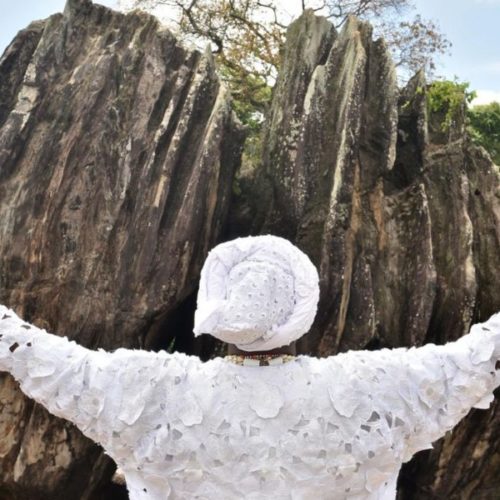
To conclude our ancestral tour in Salvador, I recommend that you go to the Fazenda Grande II neighborhood, where you’ll find Pedra de Xangô, the main symbol representing African religions. It has been there for 2 billion years! The stone and the space, considered a historic site of the old Quilombo Buraco do Tatu, based on the Municipality’s Cultural Heritage Preservation Law (8,550 / 2014), are geological heritage already nationally recognized and listed in 2017 by the Gregório de Mattos Foundation .
According to researcher Maria Alice Silva, the stone is in a remaining area of the Atlantic Forest and holds memories of quilombola and indigenous occupations. Maria Alice explains that Quilombo, home of the Tupinambás Indians, is an expression used by the communities of terreiros and residents of the Cajazeiras and Salvador regions when referring to Pedra de Xangô, also known as Pedra do Buraco do Tatu, Pedra do Quilombo do Urubu or Pedra da Onça.
“The supposed practice of offerings to caboclos or enchanted people in the place, as well as the famous ‘pajelança’ (series of rituals that the indigenous shaman performs on certain occasions with a specific goal of healing or magic), is due to the probable permanence of the indigenous people. Although the literature and historical documents don’t state exactly that the place where Pedra de Xangô is located would have been a quilombo, there are indications of African and indigenous religious practices in the area”, she emphasizes.
Member of the EtniCidades group at the Architecture School of Ufba, Maria Alice is one of the people who coordinate the creation process of the Pedra de Xangô Network Park and the APA Municipal Vale do Assis. About Pedra de Xangô, we will write a separate article, and if you want to find more information about Pedra de Xangô on Instagram (@pedra.de.xango).
“To understand the meaning of these monuments and sculptures is to be able to deepen questions about our history, avoiding the obviosities that always denote that the speech of those who occupy the majority power is the speech of truth. History needs to be seen as this constant construction of truths that are sustained in the symbolic clashes between agents over time”, points out Carlos Barros.
Cristiele France
Journalist
About the collaborator: Cristiele França is Ekedji from Ilê Asé Oya Mesi. The journalist presents the Mojubá program of the Metrópole Group and is a press officer at the Municipal Education Department. It’s worth knowing her YouTube channel at this link.
Note
This article featured interviews with:
Carlos Barros – Professor of History and Sociology. Degree in History and Master in Social Sciences at the Federal University of Bahia.
Maria Alice Silva – Researcher, member of the EtniCidades group at the Architecture School of the Federal University of Bahia (Ufba)
Herm* – A square or rectangular pillar of stone, terracotta or bronze (the column) on which the representation of the honoree’s head is placed.

